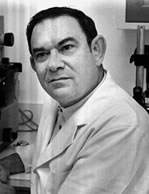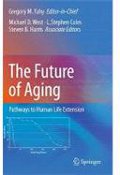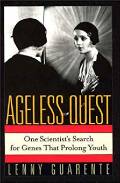Leonard Hayflick Proposes The Cellular Theory Of Aging Based On The Limited Replicative Lifespan Of Primary Human Cells
 Who:Leonard Hayflick
Who:Leonard HayflickWhen:March 01, 1965
Methods: Normal diploid cells were serially passaged in culture until they stopped dividing
Institution: Wistar Institute
Where: Philadelphia, PA, U.S.A
In earlier work, Hayflick carefully characterized the serial cultivation of primary human cell strains. Here, he elaborates on those findings.
The author demontrates that primary human cell strains each have a characteristic replicative lifespan or "doubling potential", and that this lifespan was an intrinsic characteristic that can differ between strains. He identified the number of divisions rather than the amount of elapsed time in culture as the critical parameter of lifespan.
Based on the shapes of the observed survival curves, the author proposed the finite nature cellular lifespan was due to the accumulation of some form of molecular damage: "Whatever cell component(s) may be involved in the finite lifetime of human diploid cell strains, the ultimate accumulation of nondividing cells could be the result of accumulated damage to a single cellular target or to inactivation of many targets."
Hayflick observed that doubline potentials were extended by culture under physiological oxygen (3%), which is lower than atmospheric oxygen (20%). This finding led to the hypothesis that oxidative damage could be partially responsible for limiting in vitro lifespan, consistent with the free radical hypothesis of aging.
Growth arrest leads to a loss of regenerative capacity, which in turn prevents replacement of cells lost to injury or disease. Hence, Hayflick proposed a "cellular theory of aging" in which the finite replicative lifespan of cultured cells was directly related to organismal aging.
The permanent growth arrest that occurs at the end of the replicative lifespan is now termed "cellular senescence". We now know that senescence in response to repeated passage occurs because of critical shortening of the telomeres. Senescence can also occur in response to high levels of DNA damage or inappropriate expression of oncogenes. This pathway thus prevents the proliferation of old and damaged cells, and is thought to be a major mechanism of tumor suppression.
The finite replicative lifespan of normal diploid cells is now sometimes called the "Hayflick limit" after its discoverer.
References
Links




